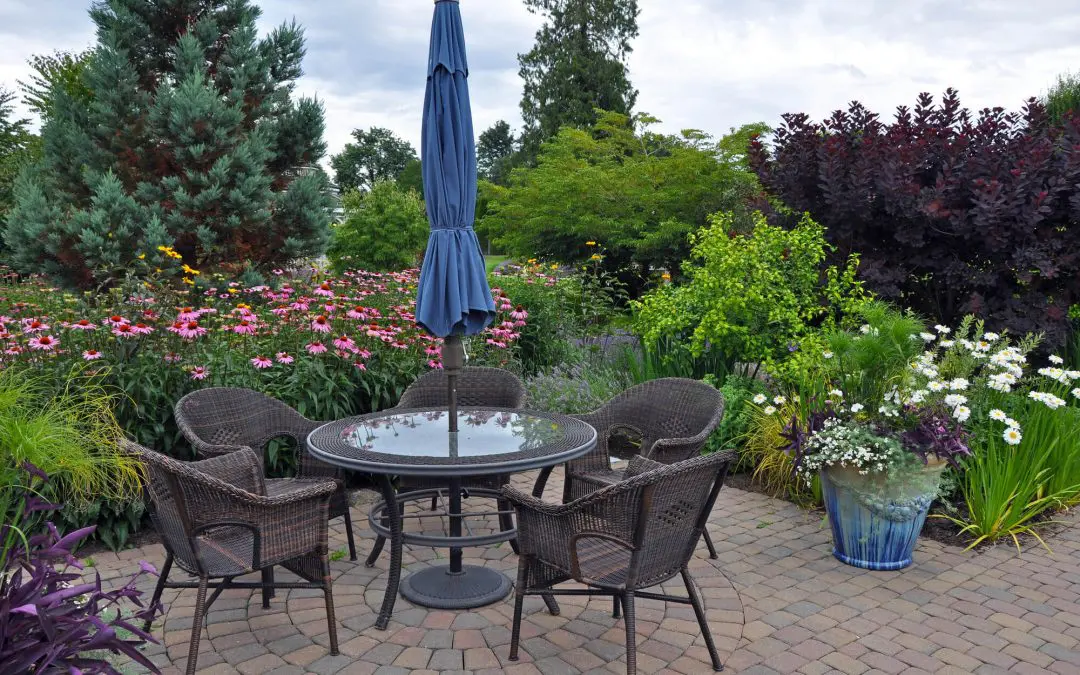Creating an outdoor space that seamlessly blends with your lifestyle and enhances the beauty of your home is a goal for many homeowners. One key element in achieving this is selecting the right patio material. From classic to contemporary, there’s a plethora of options available, each with its own unique characteristics and benefits. In this guide, we’ll explore various patio materials to help you make an informed decision for your outdoor oasis.
1. Concrete
Concrete is a versatile and cost-effective option for patio surfaces. It can be poured into any shape or size, allowing for endless design possibilities. Decorative techniques such as stamping, staining, and scoring can mimic the look of natural stone or brick, adding visual interest to your patio. Concrete is durable, low-maintenance, and can withstand harsh weather conditions, making it an excellent choice for any climate.
2. Natural Stone Patio Materials
Natural stone, such as flagstone, slate, or limestone, offers timeless beauty and elegance to any patio. Each stone is unique, featuring variations in color, texture, and pattern, adding character to your outdoor space. While natural stone can be more expensive than other materials, its durability and longevity make it a worthwhile investment. With proper sealing and maintenance, natural stone patios can withstand the test of time and retain their aesthetic appeal for years.
3. Brick
Brick is a classic choice for patio surfaces, renowned for its charm and durability. Available in various colors and sizes, brick offers versatility in design, allowing you to create intricate patterns or simple layouts to suit your style. Brick patios are relatively easy to install and require minimal maintenance, making them a practical option for homeowners seeking a timeless yet low-maintenance outdoor surface.
4. Pavers
Pavers are pre-cast concrete or clay blocks that interlock to create a durable and visually appealing patio surface. They come in a wide range of shapes, sizes, colors, and textures, allowing for endless design possibilities. Pavers are easy to install, requiring only a compacted base and sand bedding, making them an ideal DIY project for homeowners. Additionally, pavers are resistant to cracking and can be easily replaced if damaged, ensuring long-term durability and versatility.
5. Wooden Patio Materials
Wooden decks and patios exude warmth and natural beauty, creating a cozy outdoor retreat for relaxation and entertainment. Common wood options for patios include cedar, redwood, and tropical hardwoods such as teak and ipe. While wood requires regular maintenance, including sealing and staining to protect against moisture and UV damage, many homeowners appreciate the rich aesthetic and inviting atmosphere that wood patios provide.
Selecting the right patio material is essential for creating an outdoor space that reflects your style, enhances your home’s aesthetic appeal, and withstands the elements for years to come. Whether you prefer the classic charm of natural stone, the versatility of concrete, or the warmth of wood, there’s a patio material to suit every taste and budget. By carefully considering factors such as durability, maintenance, and design aesthetics, you can create a stunning outdoor oasis that enhances your lifestyle and brings joy to your home for years to come.
FAQs about Building a Patio
Are there any special considerations for building a patio in a sloped yard?
Building a patio on a sloped yard may require additional grading, retaining walls, or terracing to create a level surface. It’s essential to address drainage issues and ensure proper stability and support for the patio structure.
What maintenance is required for a patio?
Maintenance requirements vary depending on the materials used. Generally, regular cleaning, weed removal, and resealing (for materials like concrete or natural stone) may be necessary to keep your patio looking its best.
Are there any eco-friendly options for building a patio?
Yes, several eco-friendly options exist, such as using permeable pavers to allow water infiltration, choosing sustainably sourced materials like reclaimed wood or recycled composite decking, and incorporating native plants into the landscaping to promote biodiversity and reduce water usage.
How do I choose the right plants for landscaping around my patio?
Select plants for your patio landscaping based on factors such as climate, sun exposure, soil conditions, desired maintenance level, and aesthetic preferences. Consider incorporating a mix of shrubs, perennials, ornamental grasses, and container plants for visual interest and seasonal variation.
Border Home and Property Inspections offers inspections to customers in the Midwest region of Alberta and Saskatchewan. If you’re buying or selling a home, contact us to schedule our services.

